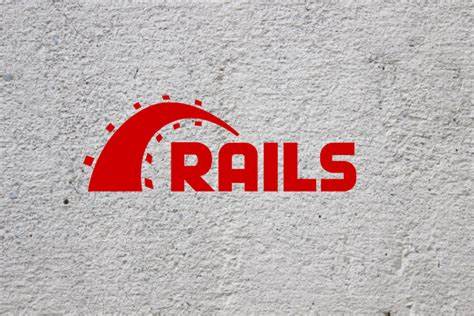Table of Contents
Introduction:
Ruby on Rails, also known as RoR or simply Rails, is a powerful web development framework written in the Ruby language. It was first released in 2005 and has since become one of the most popular frameworks for building dynamic web applications. In this comprehensive guide, we will cover everything you need to know about Ruby on Rails, including its features, architecture, and development process. We will also discuss the benefits of using Ruby on Rails and why it has become such a popular choice among web developers.
Ruby Language:
Ruby is a high-level, dynamic, and object-oriented programming language that was first released in 1995. It is known for its simplicity and readability, making it a popular choice for web development and other tasks. The syntax is concise and expressive, making it easy to write code that is both elegant and efficient. Ruby is often described as a “developer-friendly” language because it is designed to make the coding process as easy and enjoyable as possible.

MVC Architecture:
Ruby on Rails is built using the Model-View-Controller (MVC) architecture, which separates an application into three distinct parts: the model, the view, and the controller. The model is responsible for storing and retrieving data, the view is responsible for displaying the data to the user, and the controller is responsible for handling user input and coordinating the interaction between the model and the view. This separation of responsibilities makes it easier to develop, maintain, and update the application, as well as making it more scalable and secure.
Framework Features:
Ruby on Rails is known for its “convention over configuration” approach, which means that it follows a set of conventions for how web applications should be structured, rather than requiring developers to manually configure every aspect of the application. This helps to streamline the development process and reduce the amount of time it takes to build a web application. Additionally, the framework includes a number of helpful tools and features that make it easier for developers to work with, including:
- Active Record Pattern: The active record pattern is used to interact with a database in Ruby on Rails. It makes it easy to perform common database operations, such as creating, reading, updating, and deleting records, without having to write complex SQL queries.
- Testing Framework: Ruby on Rails includes a robust testing framework that makes it easy to write and run automated tests, which can help to catch bugs and ensure that the application is working correctly.
- Command-Line Interface: The command-line interface in Ruby on Rails makes it easy to perform a variety of tasks, such as generating code, running tests, and deploying the application.
- Ruby Gems: Ruby on Rails makes use of Ruby gems, which are packages of code that can be easily integrated into a project. This allows developers to quickly add new functionality to their application, without having to write the code from scratch.
- Rails Ecosystem: The Rails ecosystem includes a number of libraries, tools, and plugins that can be used to extend the functionality of Ruby on Rails.
Advantages of Ruby on Rails:
- Productivity: Ruby on Rails is designed to be developer-friendly and efficient, making it easier to build web applications quickly and with fewer lines of code. The framework’s “convention over configuration” approach means that developers can focus on building the application’s core features, rather than spending time on boilerplate code and configuration.
- Scalability: Ruby on Rails is known for its ability to scale as the needs of a web application grow. The framework’s modular design makes it easy to add new features and capabilities as needed, without sacrificing performance or stability.
- Large Community: Ruby on Rails has a large and active community of developers, making it easy to find help and resources when needed. The framework’s popularity also means that there is a wealth of libraries, plugins, and other tools available to extend its functionality.
- Ecosystem: Ruby on Rails has a rich ecosystem that includes a variety of libraries, tools, and plugins that can be easily integrated into a project. This makes it easy to add new functionality and capabilities to a web application, without having to write the code from scratch.
- Testing: Ruby on Rails includes a robust testing framework that makes it easy to write and run automated tests, which can help to catch bugs and ensure that the application is working correctly. This can help to improve the overall quality and stability of a web application.
Disadvantages of Ruby on Rails:
- Performance: Although Ruby on Rails is designed to be scalable, it may not be the best choice for applications that require high performance and low latency. The framework’s dynamic nature can make it slower than other options, such as static languages like C++ or Java.
- Complexity: Ruby on Rails can be complex to learn and use, especially for developers who are new to the framework. Its dynamic and flexible nature can make it challenging to understand how all of the different components work together, and how to configure the application correctly.
- Resource Requirements: Ruby on Rails applications can be resource-intensive, requiring more memory and processing power than other web development frameworks. This can make it more challenging to deploy the application to low-end servers or in resource-constrained environments.
- Lack of Standardization: Ruby on Rails is designed to be flexible and modular, which can make it difficult to standardize the development process and ensure that all of the components of the application are working correctly.
- Security: Although Ruby on Rails includes a number of security features, it is still up to the developer to ensure that the application is secure and free from vulnerabilities. This can be challenging, especially for developers who are not familiar with web application security best practices.
Conclusion:
Ruby on Rails is a powerful and popular web development framework that offers many benefits to developers. Its focus on productivity, scalability, and a large community make it an attractive option for building a wide range of web applications. However, it also has its limitations, such as performance, complexity, and security, that should be carefully considered before choosing Ruby on Rails for a particular project.
Overall, Ruby on Rails is a solid choice for web development, and has proven to be a valuable tool for many organizations and developers. Whether it’s the right choice for your specific needs will depend on a number of factors, including the requirements of your project, the experience and skills of your development team, and your budget and resource constraints.


